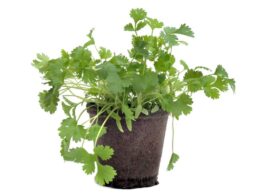What Is a Fuchsia Plant? Fuchsia Species, Origin and Appearance
Fuchsia is a genus of beautiful flowering plants, mostly shrubs and small trees, that originate from Central and South America. They make for stunning, long-blooming hanging baskets, and fuchsia plant care is relatively easy.
Fuchsias come in many species, with one of the most popular being Fuchsia magellanica (hardy fuchsia). Fuchsia plants can range in size from 8 inches to 6 feet tall, and their flowers come in a wide range of colors, from white and pale pink to deep purple. They can be vining, trailing or bushy – gardeners love fuchsias for how versatile they are!
Fuchsia Plant Care – Soil Type and Fertilizer
These plants need well-drained, consistently moist soil that is slightly acidic and rich in organic matter. A good potting mix for fuchsias contains equal parts loam, leaf mold, and perlite or sand. Ordinary peat-based potting soil can also work, as long as it drains well.
As for feeding, fuchsias need quite a lot of balanced fertilizer to keep blooming throughout the season. Fertilize your fuchsia plants every two weeks from spring until fall, and then cut down on fertilizer when they’ve finished blooming. Fish emulsion or compost are good organic alternatives.
Fuchsia Plant Care – Watering
Fuchsias need to be kept moist at all times, but they cannot tolerate soggy soil. The best way to water fuchsias is to soak the ground thoroughly and then allow it to dry out slightly before watering again.
How Much Light Fuchsia Plants Need
Proper fuchsia plant care starts with putting it in the right location. Fuchsias thrive in partial shade when grown outside, but they need bright, indirect light if grown indoors. They don’t do well in full sun, but that’s hardly a problem if you’re going to display them in hanging baskets anyway!
If you live in a hot climate, it is best to plant fuchsias in an area where they will get some afternoon shade. This will protect the plants from wilting in the heat of the day.
Ideal Temperatures and Humidity for Fuchsia Plants
Fuchsias prefer relatively cool temperatures and high humidity. The ideal temperature for fuchsia plants is between 60 and 70 degrees Fahrenheit during the day, and 50-60 degrees at night. This can depend highly on the cultivar, though, so be sure to check the specifics of the fuchsia you have.
If you live in a dry climate, your fuchsias won’t be happy without a daily misting or a humidifier running most of the time. You can also increase the humidity around them by setting them on a pebble tray.
Pruning Fuchsia Plants
Pruning is an important part of fuchsia plant care. It will keep them from getting leggy and out of control. You should deadhead fuchsia flowers as they fade, and give the plants a light trimming in early spring and late fall.
To deadhead fuchsia flowers, simply snip off the faded blooms at the base of the plant. For a light trimming, cut the fuchsia plant back by about one-third.
How to Propagate Fuchsia Plants
Fuchsias can be propagated by taking stem cuttings in the spring. Here’s how to do it step by step:
- Fill a small pot with moist potting mix (or a seed-starter mix) and stick in some wooden skewers to help support the fuchsia cuttings.
- Cut 2-4 inches of stem from the fuchsia plant, making sure the cutting has at least two sets of leaves. Cut directly above the third pair.
- Remove the bottom leaves from the cutting and dip the end in rooting hormone.
- Stick the fuchsia cutting into the potting mix and water well.
- Cover the pot with a clear plastic bag and set it in a bright, warm spot.
- Check on the fuchsia cuttings every few days to make sure they’re moist. Once they’ve rooted (after about 3-4 weeks), you can remove the cover.
- Repot your new fuchsia once you see new growth.
If you were successful, you can now follow the normal fuchsia plant care instructions. If not, don’t worry – fuchsias are easy to find at most nurseries and garden centers, so you simply get a new one!
Repotting Fuchsia Plants
Fuchsias need to be repotted every year, in the spring. Choose a pot that is only slightly larger than the previous one, and use fresh potting mix. If you’re not sure if your fuchsia needs repotting, check if the roots are coming out of the drainage holes in the bottom of the pot. If they aren’t, you can wait another year.
Common Problems with Fuchsia Plants
The most common problem with fuchsia plants is root rot, which can be caused by overwatering. If you think your fuchsia has root rot, the best thing to do is to repot it in fresh potting mix and make sure you’re not watering it too often.
Powdery mildew is another common problem, especially in humid climates. If you see powdery white spots on the leaves of your fuchsia, you can treat it with a fungicide.
Pests that feed on fuchsias include whiteflies, caterpillars and fuchsia gall mites. These insects can all be treated with insecticidal soap or neem oil.
Fuchsia Plant Toxicity
Fuchsias aren’t toxic to humans or animals, so you don’t have to worry if you have pets or small children – though you probably wouldn’t be happy if your fuchsia was eaten!
Now that you know everything about fuchsia plant care, it’s time to get out there and buy one (or two, or three!) for your own home. With a little bit of love and attention, you’ll have beautiful hanging baskets full of fuchsias in no time. Happy gardening!



















